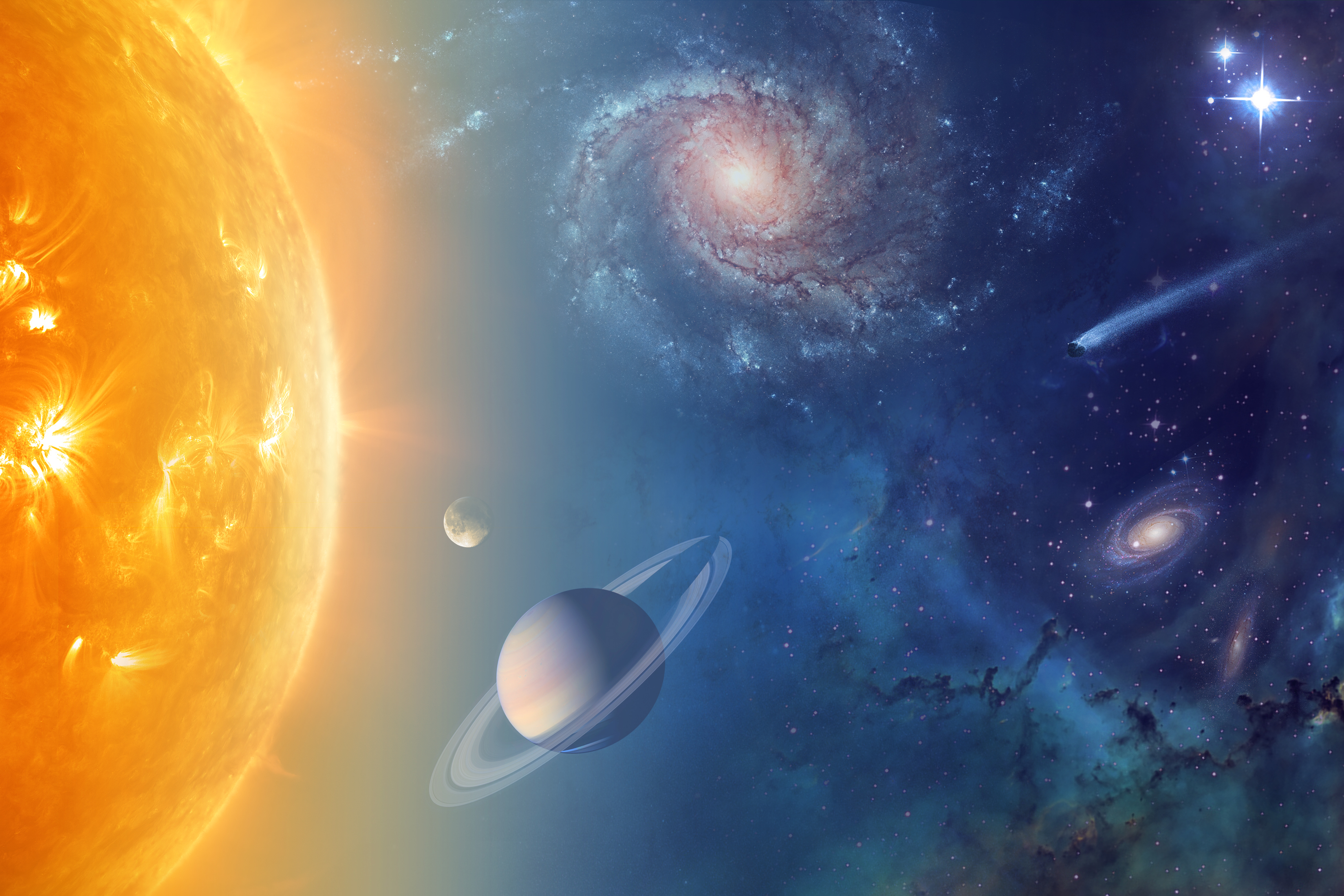NASA to Reveal New Discoveries About Oceans Beyond Earth Thursday

NASA will unveil new discoveries this week that involve alien oceans in Earth's solar system, space agency officials announced today (April 10).
On Thursday, April 13, NASA will hold a press conference that will "discuss new results about ocean worlds in our solar system," according to a press release from the agency. The discovery will involve findings from the Hubble Space Telescope and NASA's Cassini spacecraft, which is orbiting Saturn.
"These new discoveries will help inform ocean world exploration — including NASA's upcoming Europa Clipper mission planned for launch in the 2020s — and the broader search for life beyond Earth," NASA officials wrote in the same press release.
NASA's ocean worlds press conference will begin at 2 p.m. EDT (1800 GMT) on Thursday and include a question-and-answer session with a panel of scientists from the Cassini and Hubble missions, as well as NASA's planetary exploration and science directorates.
Those speakers include:
- Thomas Zurbuchen, associate administrator, Science Mission Directorate at NASA Headquarters in Washington;
- Jim Green, director, Planetary Science Division at NASA Headquarters;
- Mary Voytek, astrobiology senior scientist at NASA Headquarters;
- Linda Spilker, Cassini project scientist at NASA’s Jet Propulsion Laboratory in Pasadena, California;
- Hunter Waite, Cassini Ion and Neutral Mass Spectrometer team lead at the Southwest Research Institute (SwRI) in San Antonio;
- Chris Glein, Cassini INMS team associate at SwRI;
- William Sparks, astronomer with the Space Telescope Science Institute in Baltimore.
"Members of the public also can ask questions during the briefing using #AskNASA," NASA officials wrote.
NASA's Cassini spacecraft has been orbiting Saturn since 2004 to make detailed observations of the ringed planet and its many moons. The spacecraft is scheduled to end its mission on Sept. 15 with a fiery plunge into Saturn itself to avoid contaminating the planet's icy moons, NASA officials have said.
Get the Space.com Newsletter
Breaking space news, the latest updates on rocket launches, skywatching events and more!
The Hubble Space Telescope, meanwhile, has been in orbit around Earth since 1990 and has captured spectacular images of the universe, including of some solar system planets, during its mission. Last week, NASA unveiled amazing new images of Jupiter as seen by Hubble as the giant planet approached opposition (its closest point to Earth for 2017) on April 7.
Email Tariq Malik at tmalik@space.com or follow him @tariqjmalik and Google+. Follow us @Spacedotcom, Facebook and Google+. Original article on Space.com.
Join our Space Forums to keep talking space on the latest missions, night sky and more! And if you have a news tip, correction or comment, let us know at: community@space.com.

Tariq is the Editor-in-Chief of Space.com and joined the team in 2001, first as an intern and staff writer, and later as an editor. He covers human spaceflight, exploration and space science, as well as skywatching and entertainment. He became Space.com's Managing Editor in 2009 and Editor-in-Chief in 2019. Before joining Space.com, Tariq was a staff reporter for The Los Angeles Times covering education and city beats in La Habra, Fullerton and Huntington Beach. In October 2022, Tariq received the Harry Kolcum Award for excellence in space reporting from the National Space Club Florida Committee. He is also an Eagle Scout (yes, he has the Space Exploration merit badge) and went to Space Camp four times as a kid and a fifth time as an adult. He has journalism degrees from the University of Southern California and New York University. You can find Tariq at Space.com and as the co-host to the This Week In Space podcast with space historian Rod Pyle on the TWiT network. To see his latest project, you can follow Tariq on Twitter @tariqjmalik.









